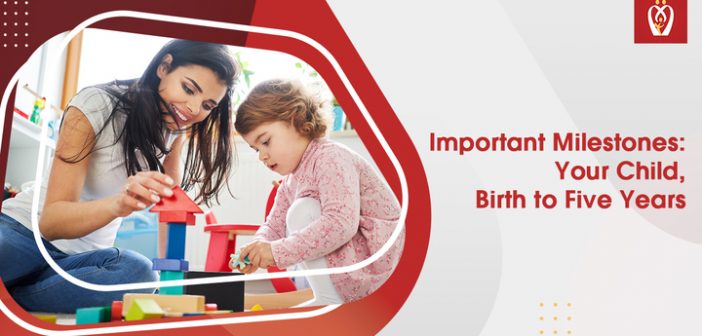As parents, we strive to improve our children’s lives in any way possible. Because we know that the first five years of a child’s life are critical to their development. We spend a lot of time reading baby and toddler parenting books, researching various topics, and engaging in social interaction. The growth and development of our child’s physical and cognitive abilities is a major concern when becoming a parent. The development of each child is unique, but certain developmental milestones can be identified. The first five years of a child’s life are critical to their development and learning. Children’s health and well-being and the course of their lives are profoundly affected by their first five years of life.
Birth to three months old
Newborns develop their reflexes for rooting, sucking, and grasping during this time period. Furthermore, during this time, infants learn to pull and tug on their own hands, clench them into fists, and bring them to their mouths. During this period, one of the most significant physical milestones is the ability to control one’s head. During this time, the baby will learn to hold its head up for a brief period of time and raise its head slightly when lying on its stomach.
This is a great time for parents to encourage their child’s physical development by providing “tummy time.” In a nutshell, Tummy Time is unstructured, awake playtime for babies on their stomachs. Your baby’s neck, back, and arms will benefit from tummy time. When it comes to higher-level motor, visual, and even speech/feeding skills in the future, it sets the groundwork for them.
Three to nine months old
Dexterity and strength are beginning to develop in babies as they reach this stage. As soon as a baby is old enough, they will start rolling over, sitting with support, pulling their bodies forward, and getting themselves up by grasping the edge of the crib or another sturdy object. Provide a wide variety of toys and sensory-stimulating objects to help children develop during this stage.
After six months of age, children are much more mobile. In most cases, they begin to grasp and pull objects toward themselves, sit up unassisted, transfer objects from one hand to the other, and start to crawl!
Nine to twelve months old | childbirth
During this stage, most babies can sit up by themselves, stand up unassisted, take their first steps, pick up and throw objects, roll a ball, and grasp objects between their thumb and one finger. Additional milestones, such as standing and walking, are important in developing a child’s fine motor skills at this time.
One to five years old
Starting from one year of age, they are able to understand certain words, respond to them, and identify objects that are similar and different. They’re also capable of sorting out their toys or pictures into different categories. They start to respond to their parents or other caretakers.
Eventually, when they are almost five, they are able to understand more complex ideas, able to rhyme words, are much better at pronouncing words, draw pictures, answer simple questions when asked, button some buttons, and are also pretty good at imitating adult actions.
The Nurturey PinkBook is a wonderful way to keep track of all the milestones of your little one. It helps you determine whether your kid is growing at a normal rate and what all to look for next. The app also provides various resources to read from and understand their milestones better!
